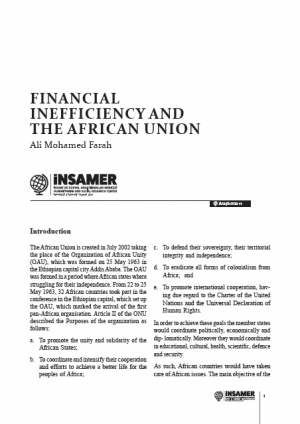In 1990, all African states were independent. However, the African continent faced civil wars and border conflicts. There have been over 9 million refugees and internally displaced people from conflicts in Africa. Hundreds and thousands of people have been slaughtered from a number of conflicts and civil wars. Since 1960, the border disputes have appeared in more than 32 African states (Ikome, 2012, p. 6). The border dispute and the horrible civil wars that happened in Somalia, Ruanda, Burundi, Liberia, and Sera Leone were the major issues during the 1990-2002. Thus, the Organization was obliged to be reorganized and reshaped according to the changing trend of the Continent including HIV, malaria and other epidemic diseases.
In September 1999, the heads of the member states of the organization issued the Sirte Declaration, calling for the establishment of an African Union, with a view, inter alia, toward accelerating the process of unity among countries of the continent, enabling it to better participate in the global economy and to better address social, economic and political problems. Since 1999, three summits have been held to facilitate the implementation of the African Union.
The Lome (Togo) Summit (2000) adopted the Constitutive Act of the African Union, which specifies the objectives, principles, and organs of the African Union. The Lusaka Summit (2001) drew the road map for the implementation of the AU. Finally, The African Union (AU) was launched in the Durban (South Africa) summit that was held in 2002.
Please click the link for full report.








